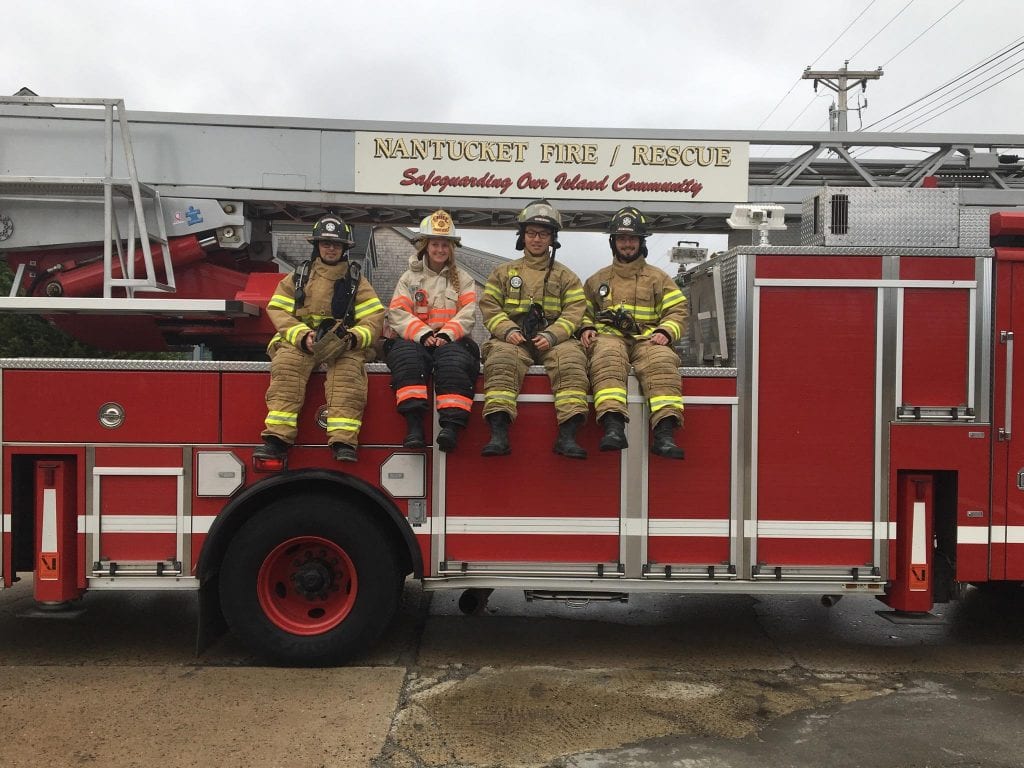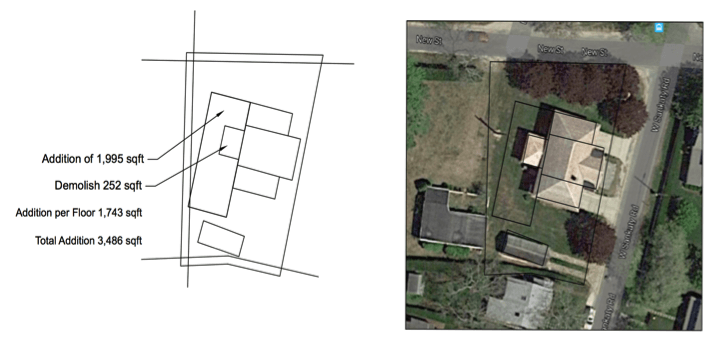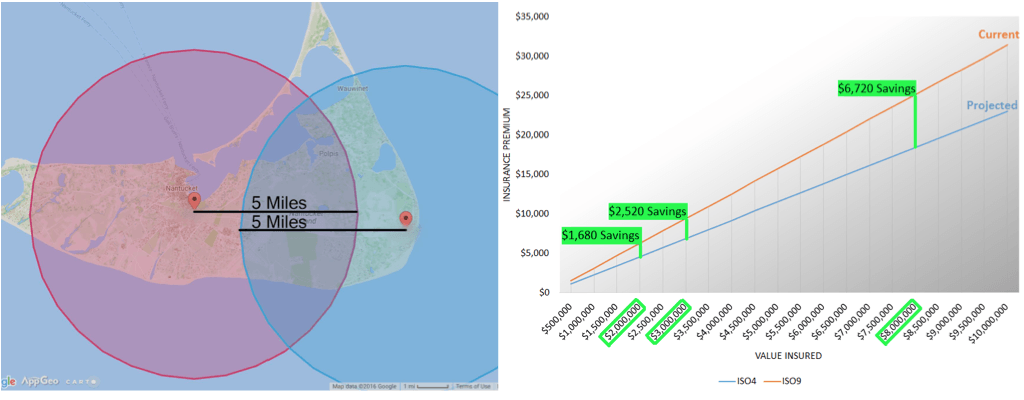Enhancing the Response Time of the Nantucket Fire Department
| Sponsor: | Nantucket Fire Department |  |
| Sponsor Liaison: | Paul Rhude, Peter Morrison | |
| Student Team: | Aidan Lippert, Jasmine Loukola, Alex Pappas, Dongsheng Sun | |
| Abstract: | The project goal was to provide detailed recommendations to assist the Nantucket Fire Department (NFD) in improving the response time and the quality of emergency responses. To accomplish this goal, we compiled and analyzed all available dispatch call data and compared the results to national standards. The project resulted in four core recommendations that address the underlying problem. These recommendations include: refine the NFD dispatch information system so data received can be analyzed easier, implement a dynamic deployment system to respond quickly to calls downtown, reopen the Siasconset station after expanding and renovating, and modify the simulation we developed to calculate which station should respond to emergency calls. | |
| Link: |
Final Presentation: Fire Department Final Presentation 2016 Final Report: Fire Department Final Report 2016 |
|
Executive Summary
The Nantucket Fire Department currently has a response time above the national standard due to under-staffing, facility centralization, and heavy seasonal traffic. These problems have multiple components that all connect to lead to an increased response time. Understaffing is the largest issue faced by the NFD (NFD Staffing Finding). The easiest way to remedy this would be to hire new people. However, there is nowhere to house new staff since the housing prices are so high on Nantucket.[1] Normally, staff would be located at other fire stations, but since the island does not have fully staffed satellite stations, this does not offer a solution. Solving just one of these challenges would be both expensive and difficult, so finding a solution that incorporates each would be the most effective way to improve the time and quality of emergency responses. The following writing outlines our team’s recommendations to the NFD, with explanation of how each could improve NFD emergency response performance.
Recommendation 1: Refine the dispatch information system to improve data quality and availability for analysis. The fire station records every call, even if the call does not have any bearing on response time. To analyze response time, it is necessary to clean the data of irrelevant points. A potential future project would be to help the NFD find a way to automatically clean calls. If the fire department were to have two sets of data, cleaned and uncleaned, they could send the full data to the state as required, but still have cleaned data for statistical analysis. Developing the data information system would require programming and design skills consistent with that of WPI students, and could likely be completed within the seven week period of an IQP. In this potential project, the team would need to complete the following tasks in order to complete the system:
- Compile a standard for clean data
- Split data into two sets, clean and unclean
- Develop a program that automatically cleans the data
- Share information with the fire department
Recommendation 2: Purchase and implement a dynamic deployment vehicle and deploy it as the Nantucket Fire Department’s first-responder downtown. A dynamic deployment vehicle would need to include all necessary ALS gear and be small and stable enough to handle Nantucket’s narrow cobblestone streets. The downtown area is prone to having many medical calls, especially during the summer (See Dynamic Deployment Finding). This is partially because of the cobblestone and rough sidewalks functioning as challenging walking surfaces for many visitors. One potential location for this vehicle for standby is in front of the sheriff’s station because not only is it downtown, but it is also close to the Madaket side of the island. Having a vehicle that can access both the downtown area as well as parts of Madaket would be extremely valuable for decreasing response time. Multiple companies were contacted for comparable vehicles. Their estimates revealed that the cost of a dynamic deployment vehicle is extremely varied, ranging anywhere from $20,000-$300,000 based on vehicle type and the amount of customization required. One potential, less expensive solution is to provide one of the companies with a vehicle, such as an SUV, to be fitted with pre-fabricated equipment racks. Further analysis could be addressed by a future student project, and should be addressed as quickly as possible, as the simulation project shows a large potential improvement for response time and quality. To complete this recommendation, the fire department and future project teams should:
- Determine necessary specifications to implement in the dynamic deployment vehicle
- Contact multiple dynamic deployment vehicle customization companies for cost estimates including:
- Odyssey Specialty Vehicles (http://www.odysseysv.com)
- FastLane Emergency Vehicles (http://flev.com)
- PL Custom Emergency Vehicles (http://www.plcustom.com)
- Designate funding within the budget for the vehicle or vehicles chosen
- Train fire department personnel to ALS levels to fully utilize the vehicle with 2-3 persons.
Recommendation 3: Renovate and reopen the Siasconset fire station as a fully staffed station. This station is currently used as a garage to house older engines, and does not have any space for housing, offices, or bunk rooms. There are about 30 calls per month in the winter and about 60 calls per month in the summer in this area (NFD, 2016). An additional incentive for reopening the Siasconset fire station is that if the Siasconset station was renovated and expanded, the insurance rates in the Siasconset area would decrease substantially, as would the response times. We recommend that the data be shown to the town to support this statement, along with the simulation (Figure 10). The potential savings in response time and potential to save lives could have a significant impact on Nantucket residents. In order to implement this change, the NFD would need town support and funding. To enact this recommendation as soon as reasonably possible, the town and fire department should:
- Run a feasibility study
- Establish funding
- Build the addition
- Increase staffing
The recommended renovation is displayed in Figures 8 and 9.
Figure 8: Top view of addition
This total addition of 3,486 square feet over two floors would allow housing for seasonal employees as well as providing capabilities for 24/7 staffing. There are two bunk rooms for seasonal employees, which would provide housing for four additional summer staff. The town owns the building, so they would not need to buy new property. This design would preserve the historic character of the building.
Figure 9: Floor plan of addition with labeled rooms
Our team found, through contacting multiple local insurance companies, that insurance rates are based on where a building is in comparison to a fire station. The least expensive insurance rates are on buildings located within a 5-mile radius of a staffed fire station. This radius has a dramatic effect on a building’s ISO[2] rating, causing a large effect on annual insurance premiums. The current rating in the Siasconset area is an ISO 9 rating, while within the 5-mile radius of the centralized station there is an ISO 4 rating. If the Siasconset station were to be reopened and fully functional, 2,328 buildings would now qualify for lower ISO ratings (Figure 10). Additionally, the reopening would result in savings for all properties that experience an ISO rating decrease.
Figure 10: 5-mile insurance circles and savings based on ratings
The renovation costs of the Siasconset station were roughly estimated to cost $1,743,000 based on construction costs of $500 per square foot (Table 7). The upkeep and staffing is estimated to be $1,200,000 per year (Rhude, 2016). The total estimated annual insurance savings of $4,444,789 is based off the ISO rating changes, the number of buildings affected, and the median value of the houses affected. It is important to note that the savings do not go directly to the town, they go to the property owners affected. The town could potentially explore the designation of fire protection districts into the town, which would allow for specialized taxes that could go directly to the fire department.
Table 8: Estimated Annual Costs and Insurance Savings of Siasconset Reopening
Recommendation 4: Use and further develop the simulation software. To estimate future response times, a basic simulation script was developed that implements Google Maps API. The simulation script can be optimized to conduct cost analysis precisely based on the NFD call data by predicting how much response time will be reduced when the solution has been proposed. For the NFD to determine the most cost effective solution, they first should:
- Decide new station locations
- Hire more staff
- Implement dynamic deployment
This script could be further developed to reduce response time through optimizing routes and choosing the best stations to deploy from. Therefore, it would be advantageous to have this program further developed after the previous two recommendations are implemented. To develop the simulation further, the following steps should be taken:
- The script should be able to determine which station is the most accessible location for a specific emergency call. Based on the existing simulation script, this step is easily developed and could be done first in two months. In the case that this step is undertaken by a WPI IQP, the group should include all time influential factors such as concurrent calls, extreme weather, and extreme traffic as variables, and add them to the script. Once those variables are added, the team should create a user-friendly interface to let people in the fire department access the program easily.
- After a user interface is made, the system can be further optimized. The program can be improved to find the best route to the emergency site. In the summer, there is a lot of congestion in the downtown area, which makes it difficult for emergency vehicles to reach their destinations. Through machine learning and algorithm optimization, this system can give advice as to what the fastest route for emergency vehicles is, and eventually it should be able to show detours to avoid congested areas. Finding the fastest route when there is traffic will be difficult to implement. The group that develops this simulation should devise the algorithms by themselves instead of implementing Google API, which takes time. The time it takes to develop the system will be based on the technical ability of the group in charge of designing this system.
We recommend that this potential project be considered by the Nantucket Project Center in conjunction with WPI Fire Protection Engineering or WPI Computer Science majors and the NFD. This project could be organized as an Interactive Qualifying Project (IQP) or Major Qualifying Project (MQP). To determine the most appropriate methods to work on this project, the following necessary knowledge should be taken into consideration. The team must fully understand the following topics:
- Traffic circumstances in Nantucket
- Call codes used by the fire department
- How to code the necessary recommendations for the simulation
- How to share this simulation with the fire department and educate them on its use
Table 8 summarizes the initial costs of Siasconset renovations and the dynamic deployment vehicle.
Table 9: Cost of Proposed Fire Department Additions
The GIS maps below estimate how much the response time would be reduced after all three recommendations, including the new fire station, the Siasconset fire station, and the dynamic deployment standby location, have been implemented (Figure 11). Compared to the 2015 data, the downtown area in the simulation data is covered by green dots, which designates less than 5 minutes of response time. In the Siasconset area in 2015, the map is dominated by larger than 10 minute response times. After simulation implementation, the response times improve considerably.
Figure 11: 2015 Call Data Compared to Simulation Results of Recommendation Locations
[1] Another 2016 IQP team worked on affordable housing. To find out more in depth information on the Nantucket Housing Crisis, visit https://wp.wpi.edu/nantucket/projects/projects-2016/town-managers-office/
[2] ISO is the International Organization for Standardization. They develop and publish International Standards for a variety of fields from fire protection insurance to medical devices.








